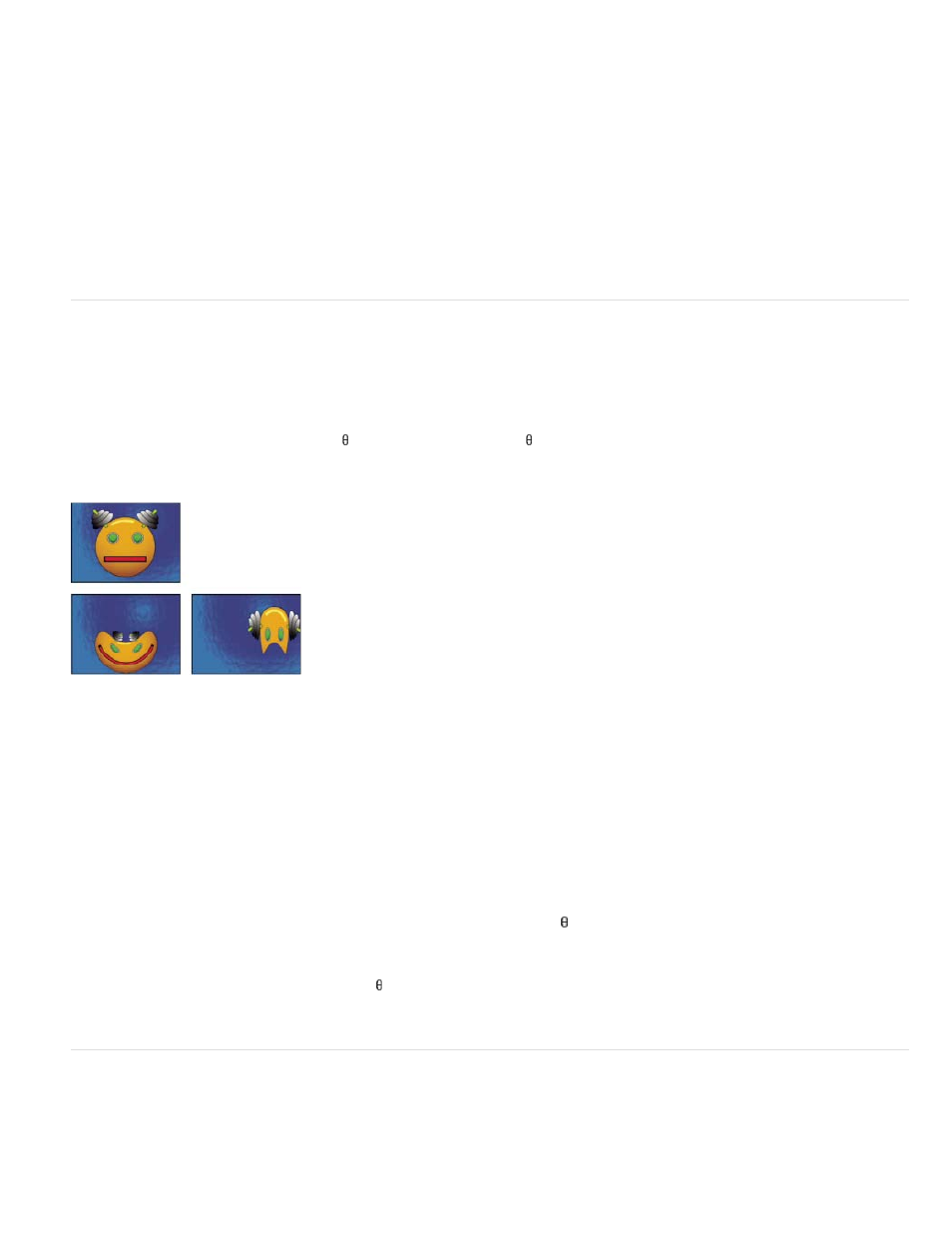Polar coordinates effect reshape effect, Polar coordinates effect, Reshape effect – Adobe After Effects User Manual
Page 534

Interpolation
Type of Conversion
Rect To Polar
Polar To Rect
1. Select the layer with the distortion, and choose Effect > Distort > Optics Compensation.
2. In the Effect Controls panel, adjust the FOV until a distorted edge or line appears straight. Note the FOV value.
3. Select the computer graphic layer you want to distort, and apply Optics Compensation to it using the FOV value from step 2.
4. Select Reverse Lens Distortion.
5. Remove Optics Compensation from the footage layer.
Polar Coordinates effect
The Polar Coordinates effect distorts a layer by transposing each pixel in the (x,y) coordinate system of the layer to the corresponding position in
the polar coordinate system, or the reverse. This effect produces unusual and surprising distortions that can vary greatly depending on the image
and the controls you select. The standard coordinate system specifies points by measuring the horizontal distance (x axis) and the vertical
distance (y axis) from the origin. Each point is specified as (x,y). The polar coordinate system specifies points by measuring the length of a radius
from the origin (r) and its angle from the x axis ( ). Each point is specified as (r, ).
This effect works with 8-bpc, 16-bpc, and 32-bpc color.
Original (upper-left), and with variations of Polar Coordinates applied (lower-left and right)
Stu Maschwitz provides an example project on his
uses the Fractal Noise effect and Colorama effect to create the corona of the
Sun and then uses the Polar Coordinates effect to wrap the line of noise around into a circle.
Specifies the amount of distortion. At 0%, no distortion occurs.
The conversion process to use:
Moves pixels by using (x,y) coordinates from each pixel as (r, ) coordinates. For example, an (x,y) coordinate of (2,3)
becomes a polar coordinate with a radius of 2 and a degree of 3. Horizontal lines distort into circles, and vertical lines into radial lines.
Moves pixels by using the (r, ) coordinates from each pixel as the (x,y) coordinates. For example, polar coordinates of
radius 10 and 45° become (x,y) coordinates of (10,45).
Reshape effect
The Reshape effect transforms one shape into another shape on the same layer, dragging the underlying image with it. The image is distorted to
fit the shape of the new area. You create or import up to three masks to define the area you want to distort: the source mask, the destination
mask, and the boundary mask (optional).
530
